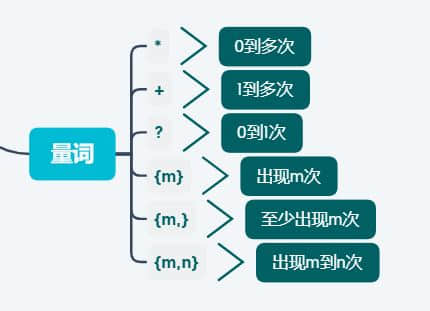现实情况远非想的那么单纯容易清晰:当优越感逐渐转为失落感甚至挫败感时,当由坚信自己是一块金子到怀疑自己是一粒沙子时,愤怒,迷茫,自卑,焦急,躁动就开始与日俱增。
正则表达式
//"""原生表达 val regex="""([0-9]+)([a-z]+)""".r val numPattern="[0-9]+".r val numberPattern="""\s+[0-9]+\s+""".r
说明:.r()方法简介:Scala中将字符串转换为正则表达式
/** You can follow a string with `.r`, turning it into a `Regex`. E.g. * * `"""A\w*""".r` is the regular expression for identifiers starting with `A`. */ def r: Regex = r()
模式匹配一
//findAllIn()方法返回遍历所有匹配项的迭代器
for(matchString <- numPattern.findAllIn("99345 Scala,22298 Spark"))
println(matchString)
说明:findAllIn(…)函数简介
/** Return all non-overlapping matches of this `Regex` in the given character
* sequence as a [[scala.util.matching.Regex.MatchIterator]],
* which is a special [[scala.collection.Iterator]] that returns the
* matched strings but can also be queried for more data about the last match,
* such as capturing groups and start position.
*
* A `MatchIterator` can also be converted into an iterator
* that returns objects of type [[scala.util.matching.Regex.Match]],
* such as is normally returned by `findAllMatchIn`.
*
* Where potential matches overlap, the first possible match is returned,
* followed by the next match that follows the input consumed by the
* first match:
*
* {{{
* val hat = "hat[^a]+".r
* val hathaway = "hathatthattthatttt"
* val hats = (hat findAllIn hathaway).toList // List(hath, hattth)
* val pos = (hat findAllMatchIn hathaway map (_.start)).toList // List(0, 7)
* }}}
*
* To return overlapping matches, it is possible to formulate a regular expression
* with lookahead (`?=`) that does not consume the overlapping region.
*
* {{{
* val madhatter = "(h)(?=(at[^a]+))".r
* val madhats = (madhatter findAllMatchIn hathaway map {
* case madhatter(x,y) => s"$x$y"
* }).toList // List(hath, hatth, hattth, hatttt)
* }}}
*
* Attempting to retrieve match information before performing the first match
* or after exhausting the iterator results in [[java.lang.IllegalStateException]].
* See [[scala.util.matching.Regex.MatchIterator]] for details.
*
* @param source The text to match against.
* @return A [[scala.util.matching.Regex.MatchIterator]] of matched substrings.
* @example {{{for (words <- """\w+""".r findAllIn "A simple example.") yield words}}}
*/
def findAllIn(source: CharSequence) = new Regex.MatchIterator(source, this, groupNames)
模式匹配二
//找到首个匹配项
println(numberPattern.findFirstIn("99ss java, 222 spark,333 hadoop"))
模式匹配三
//数字和字母的组合正则表达式 val numitemPattern="""([0-9]+) ([a-z]+)""".r val numitemPattern(num, item)="99 hadoop"
模式匹配四
//数字和字母的组合正则表达式
val numitemPattern="""([0-9]+) ([a-z]+)""".r
val line="93459 spark"
line match{
case numitemPattern(num,blog)=> println(num+"\t"+blog)
case _=>println("hahaha...")
}
val line="93459h spark"
line match{
case numitemPattern(num,blog)=> println(num+"\t"+blog)
case _=>println("hahaha...")
}
本节所有程序源码
package kmust.hjr.learningScala19
/**
* Created by Administrator on 2015/10/17.
*/
object RegularExpressOps {
def main(args:Array[String]):Unit={
val regex="""([0-9]+)([a-z]+)""".r//"""原生表达
val numPattern="[0-9]+".r
val numberPattern="""\s+[0-9]+\s+""".r
//findAllIn()方法返回遍历所有匹配项的迭代器
for(matchString <- numPattern.findAllIn("99345 Scala,22298 Spark"))
println(matchString)
//找到首个匹配项
println(numberPattern.findFirstIn("99ss java, 222 spark,333 hadoop"))
//数字和字母的组合正则表达式
val numitemPattern="""([0-9]+) ([a-z]+)""".r
val numitemPattern(num, item)="99 hadoop"
val line="93459h spark"
line match{
case numitemPattern(num,blog)=> println(num+"\t"+blog)
case _=>println("hahaha...")
}
}
}
总结
以上所述是小编给大家介绍的Scala中正则表达式以及与模式匹配结合(多种方式),希望对大家有所帮助,如果大家有任何疑问欢迎给我留言,小编会及时回复大家的!
本文Scala中正则表达式以及与模式匹配结合(多种方式)到此结束。刚走出校门的时候,如果能够找到好的单位,好的就业岗位的话,应当先就业去学习一些东西。当你有必须积累的时候,再创业,我相信成功的几率会更大。小编再次感谢大家对我们的支持!





